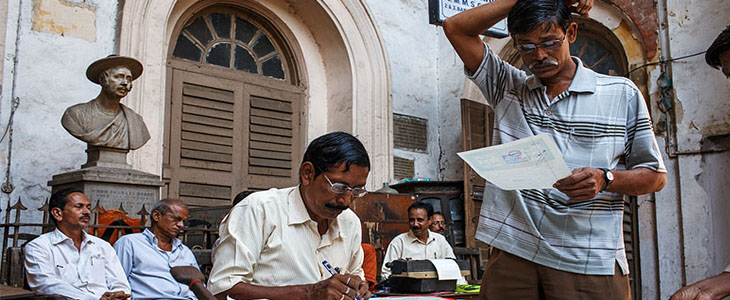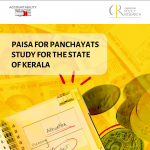
The ABC of Indian bureaucracy – a primer
3 November 2016
This is the first blog of a five-part series to unpack the meaning of some of the frequently heard terms and phrases in the Indian bureaucracy.
“Poora system hi corrupt hai!” is an all too familiar statement heard being muttered by actors from both within and outside the bureaucracy. This is a powerful, all-encompassing narrative which, to begin with, discredits the work of lakhs of individuals who are committed to public service. Moreover, every time we indulge in this line of thought we take a step away from having a meaningful engagement with the organisation that has been disproportionately tasked with the responsibility of executing and directing the fate of government policies.
Without an informed, meaningful engagement with the bureaucracy, how can we even begin to formulate the right questions to ask of people running the show? In this five-part blog series the Public Administration team at AI will attempt to shine a light on some the words one often hears being flung around in government offices, from the perspective of mid-level and front line government actors. By doing so we hope to unpack some of the factors that drive government officials at work, and touch upon a couple of root causes that add to the overarching narrative associated with the bureaucracy.
Administration in alphabetical order
The public bureaucracy, like any other organisation, has a vocabulary, work culture and an internal logic unique to itself. The following words may appear deceptively bland to the layperson but to a government official the symbolic and literal meanings associated with them is enough to legitimise most of their work practices! So without further ado, here is a list of frequently used words in bureaucratic corridors, pulled out from our field level experiences spanning seven Indian states.

In the course of this month, we will be sharing our experiences of what some of these words and phrases mean for stakeholders within the middle and lower levels of the bureaucracy[1] so watch out for these![2]
[1] For our purpose, we have defined the middle and lower or frontline bureaucracy in the following way:
Middle level bureaucracy – Permanent and semi-permanent government agencies tasked with oversight and administration of frontline agencies. They ensure proper implementation of government policies, programmes and rule compliance, and provide technical support to frontline actors. Physical proximity to public is usually lower and contact with them is less frequent compared to frontline agencies owing to location of offices and nature of the primary responsibilities.
Frontline bureaucracy – Permanent and semi-permanent government agencies tasked with interpreting, implementing state level policies and programmes. Physical proximity and frequency of contact with general public is consistently high compared to agencies at higher tiers of the bureaucracy.
[2] For an insight into the world of top level bureaucracy, do follow our resident expert, Mr. T.R Raghunandan’s blog – Raghu Bytes.





